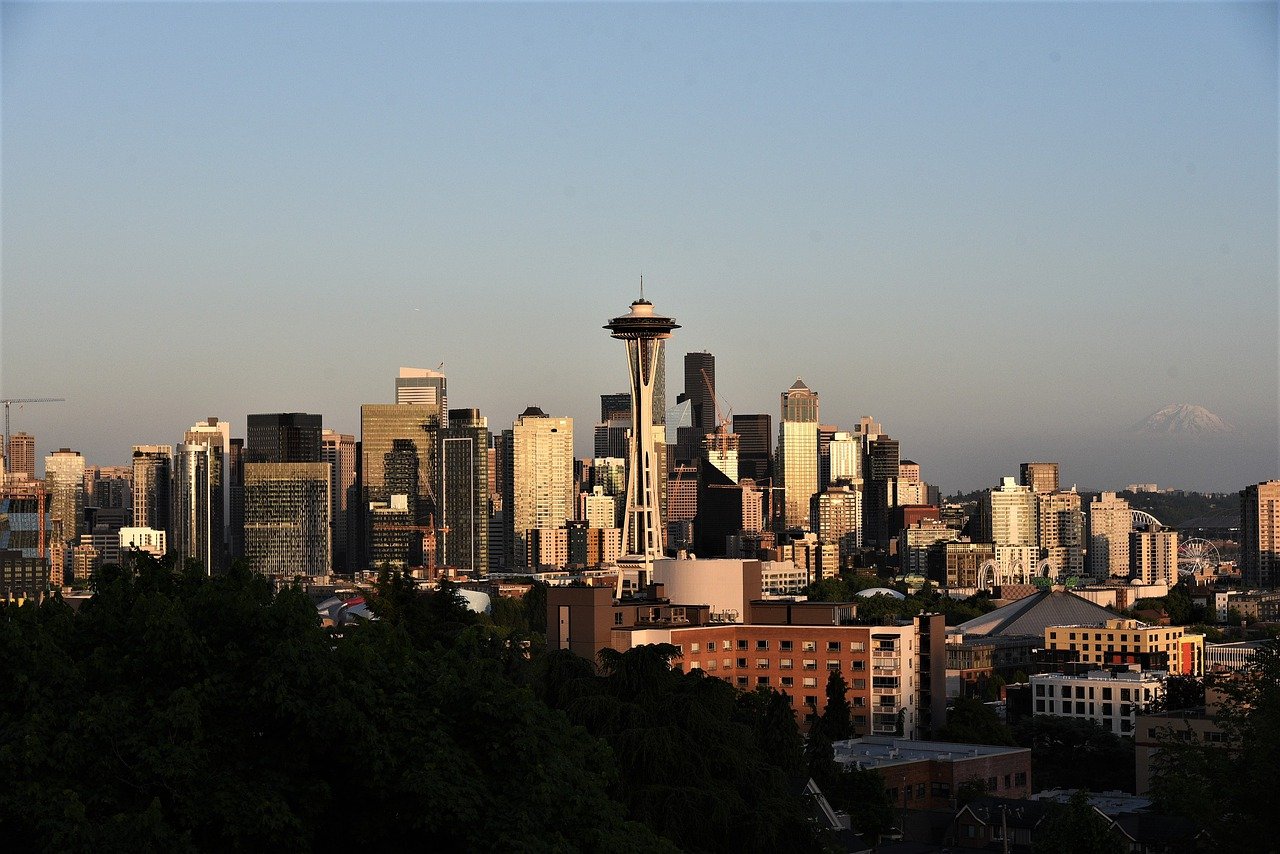Future Green Cities: An Insight into Urban AI Systems
As we stand at the crossroads of technological advancement and environmental necessity, the concept of Future Green Cities is more relevant than ever. Imagine walking through a city where the air is fresh, the streets are bustling with eco-friendly transportation, and buildings are designed not just for aesthetics but for sustainability. This is not a distant dream; it is becoming a reality thanks to the integration of Artificial Intelligence (AI) in urban planning and infrastructure. AI is not just a tool; it’s a game-changer, transforming our urban landscapes into smarter, greener environments.
In this article, we will delve into how AI is revolutionizing urban spaces, focusing on innovative technologies, smart infrastructure, and the critical role of community engagement. As cities expand and populations grow, the need for sustainable solutions becomes increasingly urgent. AI offers the potential to optimize every aspect of urban living, from transportation to waste management, making our cities not only more livable but also more resilient against the challenges posed by climate change.
Through the lens of AI, we can explore the future of urban planning, where data-driven decisions lead to smarter land use and resource allocation. It’s about creating cities that are not just functional but also harmonious with nature. This transformation is not merely a technological shift; it’s a cultural one, encouraging communities to engage actively in shaping their environments. So, how can we harness the power of AI to build these green cities? Let’s dive deeper into the specifics of AI-driven urban planning and its implications for our future.
Artificial Intelligence is revolutionizing urban planning by analyzing data to optimize land use, transportation, and resource allocation. Imagine a city where every street, park, and building is strategically placed based on real-time data analytics. This level of precision leads to more efficient and sustainable city designs that cater to the needs of residents. AI can help city planners visualize potential outcomes, allowing them to make informed decisions that benefit the community as a whole.
For instance, AI can analyze traffic patterns, demographic data, and environmental factors to suggest the best locations for new parks, schools, and public transport hubs. This not only enhances the quality of life for residents but also promotes a sense of community. By integrating AI into urban planning, we can create cities that are not just built but are alive, adapting to the needs and desires of their inhabitants.
The implementation of AI in transportation systems enhances traffic management, reduces congestion, and promotes the use of eco-friendly transport options. Picture a city where traffic jams are a thing of the past, where public transport is efficient, and where walking and cycling are the preferred modes of transportation. AI plays a pivotal role in making this vision a reality, contributing to cleaner air and improved urban mobility.
Autonomous vehicles are set to transform urban transportation by providing safer, more efficient travel options. These vehicles not only reduce the reliance on personal cars but also lower greenhouse gas emissions in cities. Imagine a fleet of self-driving cars that can communicate with each other and with traffic signals to optimize routes and reduce travel times. This innovation could lead to a significant decrease in road congestion and a corresponding increase in air quality.
AI technologies can improve public transit systems through real-time data analysis, optimizing routes and schedules. For example, if a bus is running late, AI can reroute other buses to accommodate the delay, ensuring that services meet the needs of urban populations effectively. This kind of responsiveness not only enhances the user experience but also encourages more people to use public transport, reducing the number of cars on the road.
Integrating AI with smart infrastructure allows for seamless communication between vehicles, traffic signals, and public transport. This interconnectedness enhances overall efficiency and promotes sustainable urban mobility solutions. Imagine traffic lights that adjust their timing based on real-time traffic conditions, minimizing wait times and reducing emissions. This is the future of urban transportation, driven by AI.
Utilizing AI for environmental monitoring enables cities to better manage resources, track pollution levels, and implement strategies that promote sustainability and resilience against climate change. With the help of AI, cities can monitor air quality, water usage, and energy consumption in real-time, allowing for quick responses to environmental challenges.
AI plays a crucial role in the development of green buildings by optimizing energy consumption, enhancing indoor air quality, and promoting sustainable materials. These innovations contribute to healthier urban living spaces. Imagine living in a building that adjusts its temperature based on the number of occupants and the weather outside, using energy only when necessary. This not only saves money but also reduces the building's carbon footprint.
Innovative AI solutions can predict energy usage patterns, allowing for the design of buildings that minimize waste and maximize efficiency. By analyzing data from various sources, AI can suggest improvements that lead to significant energy savings. This is not just about saving money; it's about creating a sustainable future for our cities.
AI technologies in waste management streamline collection processes, optimize recycling efforts, and reduce landfill waste. Imagine a waste collection system that uses AI to determine the most efficient routes for garbage trucks, reducing fuel consumption and emissions. This fosters a circular economy and enhances the sustainability of urban areas.
Engaging communities in the development and implementation of AI systems ensures that urban solutions are tailored to local needs. This fosters a sense of ownership and collaboration in creating greener cities. When residents are involved in the planning process, they are more likely to support and utilize the systems put in place. This engagement is crucial for the success of any urban initiative, especially those focused on sustainability.
- What is the role of AI in urban planning? AI helps analyze data to optimize land use, transportation, and resource allocation, leading to more efficient and sustainable city designs.
- How do smart transportation solutions work? AI enhances traffic management and promotes eco-friendly transport options, reducing congestion and improving urban mobility.
- Can AI help with environmental management? Yes, AI can monitor resources, track pollution levels, and implement strategies for sustainability.
- What are green building technologies? These are innovations that optimize energy consumption and promote sustainable materials in building design.
- Why is community engagement important in urban AI? Community involvement ensures that urban solutions meet local needs and fosters a sense of ownership among residents.

AI-Driven Urban Planning
Artificial Intelligence is revolutionizing urban planning in ways that were once confined to the realm of science fiction. Imagine a city where every aspect of urban life is optimized for efficiency and sustainability, where data-driven decisions create environments that are not only livable but also thriving. AI systems analyze vast amounts of data to help city planners understand patterns and trends, leading to more informed decisions about land use, transportation, and resource allocation.
Consider how AI can transform a congested city into a model of efficiency. By harnessing data from various sources—such as traffic cameras, public transport schedules, and even social media—AI can identify peak traffic times and suggest optimal routes for vehicles. This not only alleviates congestion but also reduces emissions, making urban areas healthier for residents. The integration of AI in urban planning means that cities can evolve in real-time, adapting to the changing needs of their populations.
Furthermore, the impact of AI extends beyond just traffic management. It plays a crucial role in the allocation of resources such as water and energy. For instance, AI can predict demand fluctuations, allowing municipalities to manage resources more effectively. This predictive capability is vital for creating sustainable cities that can withstand environmental challenges, such as droughts or floods. By using AI to model various scenarios, planners can develop strategies that ensure resilience and sustainability in urban environments.
Additionally, community engagement is a vital component of AI-driven urban planning. When local residents are involved in the planning process, they can provide insights that data alone cannot capture. AI tools can facilitate this engagement by visualizing potential changes in the urban landscape, enabling residents to see how proposed developments might impact their neighborhoods. This collaborative approach fosters a sense of ownership among community members and ensures that urban solutions are tailored to meet local needs.
In summary, AI-driven urban planning is not just about technology; it's about creating a future where cities are designed with people and the environment in mind. As we move forward, the integration of AI into urban planning processes promises to enhance the quality of life for residents while promoting sustainability. With the right tools and community involvement, we can build cities that are not only green but also smart and inclusive.
- What is AI-driven urban planning? AI-driven urban planning utilizes artificial intelligence to analyze data and optimize city designs for better resource management, transportation, and land use.
- How does AI improve transportation in cities? AI enhances transportation by analyzing traffic patterns, optimizing routes, and promoting eco-friendly transport options, leading to reduced congestion and cleaner air.
- Why is community engagement important in urban planning? Community engagement ensures that urban solutions reflect the needs and desires of local residents, fostering collaboration and ownership of urban spaces.

Smart Transportation Solutions
In our rapidly evolving urban landscapes, the integration of Artificial Intelligence (AI) into transportation solutions is nothing short of revolutionary. Imagine a city where traffic flows smoothly, public transport is always on time, and pollution levels drop significantly. Sounds like a dream, right? Well, with AI at the helm, this dream is becoming a reality. By harnessing the power of data, AI enhances traffic management systems, reduces congestion, and promotes the use of eco-friendly transport options. This not only leads to cleaner air but also improves overall urban mobility.
One of the most exciting advancements in this realm is the development of autonomous vehicles. These self-driving cars are not just a futuristic concept; they are set to transform the way we navigate our cities. Picture this: a fleet of autonomous vehicles seamlessly communicating with each other, optimizing routes in real-time, and significantly reducing the number of personal cars on the road. This shift not only enhances safety but also helps lower greenhouse gas emissions, making our cities greener and more sustainable.
But it doesn't stop there! AI technologies are also making waves in public transit systems. By utilizing real-time data analysis, cities can optimize routes and schedules to better meet the needs of urban populations. Think about how frustrating it is to wait for a bus that’s late or to find out that the train you need has been delayed. With AI, public transport can become more reliable and efficient, ensuring that residents can get where they need to go without the hassle.
Moreover, the integration of AI with smart infrastructure is paving the way for a more connected urban environment. Imagine traffic signals that adjust their timing based on real-time traffic conditions or vehicles that communicate with public transport systems to ensure seamless transitions. This level of connectivity enhances overall efficiency and promotes sustainable urban mobility solutions. It's like a well-orchestrated symphony where every instrument plays in harmony, resulting in a smoother, more enjoyable experience for everyone.
To illustrate the impact of these smart transportation solutions, consider the following table that highlights key benefits:
| Benefit | Description |
|---|---|
| Reduced Traffic Congestion | AI optimizes traffic flow, minimizing delays and improving travel times. |
| Enhanced Safety | Autonomous vehicles reduce human error, leading to fewer accidents. |
| Lower Emissions | Encouraging eco-friendly transport options decreases pollution levels. |
| Improved Public Transit | Real-time data analysis ensures public transport meets community needs effectively. |
As we venture further into the future, the integration of AI in transportation is not just a luxury; it’s a necessity for our cities to thrive sustainably. With smarter solutions at our fingertips, we can look forward to a future where urban mobility is efficient, safe, and environmentally friendly.
- How does AI improve traffic management? AI analyzes real-time data to optimize traffic signals and routes, reducing congestion.
- What are the environmental benefits of autonomous vehicles? They lower greenhouse gas emissions by reducing the number of personal vehicles on the road.
- Can AI enhance public transportation? Yes, AI can optimize routes and schedules based on real-time demand, making public transit more reliable.

Autonomous Vehicles
Imagine a world where you can sit back, relax, and let your car do all the driving. Sounds like science fiction, right? Well, welcome to the era of , where artificial intelligence (AI) is redefining urban transportation. These self-driving cars are not just a futuristic dream; they are becoming a reality that promises to transform our cities for the better. With their ability to navigate traffic, reduce accidents, and lower emissions, autonomous vehicles are paving the way towards a more sustainable and efficient urban environment.
One of the most exciting aspects of autonomous vehicles is their potential to enhance safety. Traditional driving relies heavily on human judgment, which can be prone to error. Autonomous vehicles, equipped with advanced sensors and AI algorithms, can make split-second decisions based on real-time data. This capability significantly reduces the risk of accidents caused by distracted or impaired drivers. According to recent studies, the widespread adoption of self-driving technology could lead to a dramatic decrease in traffic fatalities, making our roads safer for everyone.
Furthermore, these vehicles offer a solution to the growing problem of traffic congestion in urban areas. By utilizing AI to communicate with each other and with traffic management systems, autonomous vehicles can optimize their routes, avoid bottlenecks, and maintain steady speeds. This not only saves time for commuters but also reduces fuel consumption and greenhouse gas emissions. Imagine a city where traffic flows smoothly, and air quality improves—autonomous vehicles are key players in making this vision a reality.
Moreover, the impact of autonomous vehicles on public transit cannot be overstated. As cities strive to provide efficient transportation options, integrating self-driving technology into public transit systems can revolutionize the way we commute. For instance, autonomous shuttles can operate on-demand, picking up passengers at their convenience and reducing wait times. This flexibility makes public transit more appealing, encouraging more people to leave their personal cars at home and opt for eco-friendly transportation alternatives.
However, the transition to autonomous vehicles is not without its challenges. Issues such as regulatory frameworks, public acceptance, and infrastructure readiness must be addressed to fully realize their potential. Communities need to engage in discussions about the implications of this technology, ensuring that it aligns with their needs and values. By fostering collaboration between city planners, technology developers, and residents, we can create a roadmap for integrating autonomous vehicles into our urban landscapes.
In conclusion, autonomous vehicles represent a significant leap forward in urban transportation. With their potential to enhance safety, alleviate traffic congestion, and improve public transit, they are poised to play a crucial role in the development of future green cities. As we embrace this technology, it’s essential to keep the conversation going and ensure that our cities evolve in a way that benefits everyone.
- What are autonomous vehicles? Autonomous vehicles are self-driving cars that use AI and sensors to navigate without human intervention.
- How do autonomous vehicles improve safety? They reduce human error by using advanced algorithms and real-time data to make driving decisions.
- Can autonomous vehicles help reduce traffic congestion? Yes, by optimizing routes and communicating with traffic systems, they can significantly improve traffic flow.
- What challenges do we face with autonomous vehicles? Key challenges include regulatory issues, public acceptance, and the need for updated infrastructure.

Impact on Public Transit
As cities continue to grow and evolve, the role of public transit becomes more crucial than ever. With the integration of Artificial Intelligence (AI) technologies, public transit systems are not just keeping pace with urbanization; they are transforming the way we think about mobility. Imagine a world where your bus arrives exactly when you need it, where trains run on time, and where the overall experience of commuting is as seamless as possible. This is not just a dream—it's becoming a reality thanks to AI.
AI enhances public transit through real-time data analysis, allowing cities to optimize routes and schedules based on actual demand. This means fewer crowded buses during peak hours and more reliable service for those who depend on public transportation. For example, by analyzing data from various sources, including weather patterns, traffic conditions, and historical ridership statistics, AI systems can predict when and where transit services are needed the most. This predictive capability leads to better resource allocation and improved service reliability.
Furthermore, AI can facilitate the integration of different modes of transportation. Imagine hopping off a train and seamlessly transferring to a bus or bike-share service without missing a beat. This level of connectivity not only makes commuting easier but also encourages more people to use public transit instead of personal vehicles, which in turn reduces traffic congestion and lowers greenhouse gas emissions.
To illustrate the impact of AI on public transit, consider the following table that outlines key benefits:
| Benefit | Description |
|---|---|
| Improved Efficiency | AI systems can analyze data to optimize transit schedules, reducing wait times and enhancing service frequency. |
| Cost Savings | By optimizing routes and schedules, cities can reduce operational costs and allocate resources more effectively. |
| Enhanced User Experience | Real-time updates and more reliable services lead to a better overall experience for commuters. |
| Environmental Benefits | Encouraging the use of public transit reduces reliance on personal vehicles, leading to lower emissions and cleaner air. |
Moreover, AI can also help in managing crowd control during peak hours. By analyzing data from mobile apps and ticketing systems, transit authorities can identify overcrowded routes and make necessary adjustments, such as deploying additional vehicles or altering schedules. This proactive approach not only enhances the experience for passengers but also ensures that safety is prioritized.
In conclusion, the impact of AI on public transit is profound and far-reaching. As cities embrace these technologies, we can expect a future where public transit is not just a means of getting from point A to point B, but a vital component of a sustainable urban ecosystem. The integration of AI in public transit systems is paving the way for smarter, more efficient, and environmentally friendly urban mobility solutions.
- How does AI improve public transit? AI utilizes real-time data to optimize routes, schedules, and resource allocation, enhancing service reliability and efficiency.
- What are the environmental benefits of AI in public transit? By reducing reliance on personal vehicles and improving public transport usage, AI helps lower greenhouse gas emissions and promotes cleaner air.
- Can AI predict public transit demand? Yes, AI can analyze historical data and current conditions to predict when and where transit services are needed the most.
- How does AI enhance the user experience in public transit? AI provides real-time updates, reduces wait times, and improves overall service reliability, making commuting more convenient.

Integration with Smart Infrastructure
In today’s rapidly evolving urban landscape, the integration of AI with smart infrastructure stands as a beacon of hope for sustainable development. Imagine a city where traffic lights adjust in real-time based on traffic flow, where public transport is not just on time but anticipates the needs of its passengers. This is not a distant dream; it is becoming a reality through the power of artificial intelligence.
Smart infrastructure encompasses a variety of technologies designed to improve the efficiency and effectiveness of urban systems. By leveraging AI algorithms, cities can create a cohesive network that connects vehicles, traffic signals, and public transport systems. This seamless communication enhances not only the flow of traffic but also promotes safety and reduces emissions.
For instance, consider the way AI can analyze data from various sources, such as sensors embedded in roads and vehicles. By processing this data, AI can optimize traffic signal timing, thereby reducing wait times and minimizing congestion. This leads to a smoother commute, less frustration for drivers, and a significant reduction in greenhouse gas emissions. The ripple effect of such improvements can lead to cleaner air and healthier urban environments.
Moreover, the integration of AI with smart infrastructure goes beyond just traffic management. It extends to public safety, energy efficiency, and even waste management. For example, smart waste bins equipped with sensors can notify waste management services when they are full, ensuring timely collection and reducing overflow. This not only keeps the city clean but also promotes the recycling and proper disposal of waste.
As cities continue to evolve, the importance of community input cannot be overstated. Engaging citizens in the design and implementation of these smart systems ensures that the solutions developed are in line with the community's needs and values. When residents feel a sense of ownership and involvement in these projects, they are more likely to embrace and support them, leading to a more sustainable urban future.
In conclusion, the integration of AI with smart infrastructure is paving the way for cities that are not only more efficient but also more livable. By harnessing the power of technology, urban planners can create environments that are responsive to the needs of their inhabitants while promoting sustainability. As we move forward, the collaboration between technology, infrastructure, and community engagement will be vital in shaping the green cities of tomorrow.
- What is smart infrastructure?
Smart infrastructure refers to the use of technology, such as AI and sensors, to improve the efficiency and effectiveness of urban systems, including transportation, energy, and waste management.
- How does AI improve traffic management?
AI analyzes real-time data from various sources to optimize traffic signals and reduce congestion, leading to smoother commutes and lower emissions.
- What role does community engagement play in urban AI systems?
Community engagement ensures that AI solutions are tailored to local needs, fostering a sense of ownership and collaboration in creating greener cities.

Data-Driven Environmental Management
In the quest for greener cities, has emerged as a pivotal strategy. By harnessing the power of artificial intelligence, urban planners and environmentalists can monitor and manage resources more effectively than ever before. Imagine a city where real-time data informs every decision, from air quality to water usage, allowing for a proactive approach to environmental challenges. This is not just a dream; it's becoming a reality in cities around the globe.
AI technologies enable cities to collect vast amounts of data from various sources, including sensors, satellites, and public reports. This data can be analyzed to identify pollution hotspots, track waste management efficiency, and even predict environmental trends. For instance, through the analysis of air quality data, cities can implement targeted measures to reduce emissions in areas that need it most. This is akin to having a personal trainer for the environment—constantly monitoring performance and suggesting improvements.
One of the most significant advantages of data-driven environmental management is its ability to foster adaptive strategies. Cities can respond to environmental changes with agility, adjusting policies and practices based on real-time insights. For example, during a heatwave, AI can analyze weather patterns and suggest ways to cool urban areas, like increasing tree cover or optimizing public cooling centers. This adaptability not only enhances city resilience but also ensures that urban environments can thrive despite the challenges posed by climate change.
Moreover, the integration of AI in environmental management promotes transparency and community involvement. When residents can access data about their environment—such as local air quality indices or water conservation efforts—they are more likely to engage in sustainability initiatives. Community engagement becomes a vital part of the solution, as informed citizens can collaborate with local governments to implement changes that reflect their needs and values.
As cities continue to evolve, the role of will only grow. By leveraging AI technologies, urban centers can not only address current environmental issues but also lay the groundwork for a sustainable future. The potential for improved resource management, enhanced public health, and greater community engagement makes this approach essential in the ongoing journey toward greener urban landscapes.
- What is data-driven environmental management?
Data-driven environmental management refers to the use of data analytics and artificial intelligence to monitor, analyze, and improve environmental conditions in urban settings. - How does AI contribute to environmental management?
AI helps in collecting and analyzing large datasets to identify trends, predict outcomes, and suggest actionable strategies for improving urban sustainability. - Why is community engagement important in environmental management?
Community engagement ensures that solutions are tailored to local needs and fosters a sense of ownership among residents, leading to more effective and sustainable outcomes.

Green Building Technologies
In today's rapidly evolving urban landscape, are at the forefront of creating sustainable environments. These technologies not only focus on reducing the environmental impact of buildings but also enhance the quality of life for their occupants. Imagine living in a space that not only conserves energy but also promotes your well-being. That's the promise of green buildings, and AI is playing a pivotal role in making this vision a reality.
One of the most significant contributions of AI in green building technologies is its ability to optimize energy consumption. Through sophisticated algorithms, AI can analyze vast amounts of data to predict energy usage patterns. This means that buildings can be designed or retrofitted to minimize energy waste. For instance, AI can adjust heating, ventilation, and air conditioning (HVAC) systems in real-time based on occupancy and weather conditions, ensuring that energy is used efficiently without sacrificing comfort.
Furthermore, the integration of AI in building management systems allows for continuous monitoring of indoor air quality. By utilizing sensors to detect pollutants and allergens, AI can automatically adjust ventilation rates or alert building managers to potential issues. This proactive approach not only enhances the health of the occupants but also contributes to the overall sustainability of the building.
When it comes to materials, AI can assist architects and builders in selecting sustainable materials that have a lower environmental impact. By analyzing the lifecycle of materials, including their production processes and transportation emissions, AI can recommend options that are not only durable but also eco-friendly. This consideration is vital in reducing the carbon footprint of new constructions.
To illustrate the impact of green building technologies, consider the following table that highlights key innovations:
| Technology | Description | Benefits |
|---|---|---|
| Smart HVAC Systems | AI-controlled systems that optimize heating and cooling based on real-time data. | Improved energy efficiency and comfort. |
| Energy Management Systems | Systems that monitor and analyze energy usage patterns. | Reduced energy costs and waste. |
| Water Conservation Technologies | AI-driven systems that optimize water usage and recycling. | Lower water bills and reduced environmental impact. |
As cities continue to grow, the importance of green building technologies cannot be overstated. They represent a shift towards a more sustainable future where urban environments are designed with both the planet and its inhabitants in mind. By leveraging AI, we can ensure that our buildings are not just structures, but rather living ecosystems that contribute positively to their surroundings.
- What are green building technologies?
Green building technologies refer to methods and materials used in construction that minimize environmental impact and enhance energy efficiency. - How does AI contribute to green buildings?
AI optimizes energy consumption, improves indoor air quality, and assists in the selection of sustainable materials. - Why is indoor air quality important?
Good indoor air quality is crucial for the health and comfort of occupants, reducing the risk of respiratory issues and allergies. - What are some examples of green building technologies?
Examples include smart HVAC systems, energy management systems, and water conservation technologies.

Energy Efficiency Innovations
In today's rapidly evolving world, are at the forefront of sustainable urban development. With cities expanding and energy demands increasing, the integration of Artificial Intelligence (AI) into building design and operation has become essential. Imagine a city where buildings are not just structures, but intelligent systems that adapt to their environment and the needs of their inhabitants. This is not a distant dream; it is becoming a reality thanks to AI-driven technologies.
One of the most exciting aspects of these innovations is the ability of AI to predict energy usage patterns with remarkable accuracy. By analyzing historical data, weather forecasts, and even the behavior of occupants, AI systems can optimize energy consumption in real-time. For instance, a smart building equipped with AI can adjust heating and cooling systems based on the number of people present in a room, ensuring comfort while minimizing energy waste. This not only leads to lower utility bills but also significantly reduces the carbon footprint of urban environments.
Furthermore, AI can facilitate the use of renewable energy sources by predicting when and how much energy will be produced from solar panels or wind turbines. This capability allows buildings to maximize their use of clean energy, reducing reliance on fossil fuels. As cities strive to meet greenhouse gas reduction targets, these innovations play a crucial role in creating a sustainable future.
Another key innovation is the implementation of smart energy management systems that utilize AI algorithms to monitor and control energy consumption across multiple buildings. These systems can provide valuable insights into energy usage trends, enabling facility managers to make informed decisions that enhance efficiency. For example, a network of connected buildings can share excess energy with one another, ensuring that no energy goes to waste. This interconnected approach fosters a sense of community and collaboration among urban dwellers, reinforcing the idea that sustainability is a collective effort.
To illustrate the impact of energy efficiency innovations, consider the following table that highlights the benefits of AI in building energy management:
| Innovation | Benefit |
|---|---|
| Predictive Analytics | Reduces energy waste by optimizing consumption based on real-time data. |
| Smart Energy Management Systems | Enhances efficiency through data sharing and collaborative energy use. |
| Integration with Renewable Energy | Maximizes the use of clean energy sources, lowering reliance on fossil fuels. |
| Automated Control Systems | Adjusts energy use automatically based on occupancy and environmental conditions. |
In conclusion, the future of urban living is bright thanks to energy efficiency innovations powered by AI. These technologies not only contribute to a healthier environment but also enhance the quality of life for residents. As cities continue to grow, the importance of embracing these innovations cannot be overstated. They represent a crucial step towards building greener, smarter, and more sustainable urban spaces.
- What are energy efficiency innovations?
Energy efficiency innovations refer to technologies and practices that reduce energy consumption while maintaining the same level of comfort and functionality in buildings. - How does AI contribute to energy efficiency?
AI contributes by analyzing data to optimize energy usage, predict consumption patterns, and manage energy resources effectively. - What is the role of renewable energy in urban sustainability?
Renewable energy plays a crucial role in reducing reliance on fossil fuels and lowering greenhouse gas emissions, making cities more sustainable. - How can communities engage with these technologies?
Communities can engage by participating in local sustainability initiatives, providing feedback on energy management systems, and advocating for smart building technologies.

Smart Waste Management
In our quest for greener cities, emerges as a vital component that can significantly enhance urban sustainability. Traditional waste management systems often struggle with inefficiencies, leading to overflowing bins and increased landfill waste. However, by leveraging artificial intelligence technologies, cities can revolutionize how they handle waste, making the process more efficient, eco-friendly, and responsive to the needs of their communities.
One of the most exciting aspects of smart waste management is the use of IoT sensors placed in waste bins. These sensors monitor the fill levels of bins in real-time, allowing waste collection services to optimize their routes and schedules based on actual need rather than fixed timelines. Imagine a garbage truck that only comes when a bin is actually full! This not only reduces operational costs but also cuts down on unnecessary emissions from vehicles roaming the streets. It's like having a personal assistant for your trash, ensuring that it gets picked up at just the right time.
Moreover, AI can analyze data collected from these sensors to predict waste generation patterns. For instance, during holidays or major events, waste production typically spikes. By anticipating these surges, cities can adjust their waste management strategies accordingly, ensuring that they are prepared to handle the increased load without compromising cleanliness. This predictive capability is akin to having a weather forecast for waste—allowing cities to be proactive rather than reactive.
Another innovative approach in smart waste management involves the use of machine learning algorithms to enhance recycling processes. By implementing smart sorting technologies, AI can identify and separate recyclable materials from general waste more efficiently than human workers. This not only increases recycling rates but also minimizes contamination, which is a common issue in recycling efforts. For instance, AI-powered robots can quickly sort through waste, ensuring that materials like plastics, metals, and paper are correctly categorized, thus promoting a circular economy.
Furthermore, community engagement plays a crucial role in the success of smart waste management systems. Cities can utilize mobile applications to encourage residents to participate actively in waste reduction initiatives. These apps can provide information on recycling guidelines, track individual waste habits, and even offer rewards for reducing waste. This kind of interactive platform fosters a sense of ownership among residents, making them feel like they are part of the solution rather than just passive observers.
To illustrate the impact of smart waste management, consider the following table showcasing the benefits of integrating AI into waste management systems:
| Benefit | Description |
|---|---|
| Increased Efficiency | Optimized collection routes reduce fuel consumption and operational costs. |
| Higher Recycling Rates | AI sorting technologies improve the accuracy of recycling processes. |
| Community Engagement | Mobile apps encourage residents to participate in waste reduction efforts. |
| Data-Driven Insights | Real-time data allows for better planning and resource allocation. |
In conclusion, smart waste management powered by AI is not just about keeping our cities clean; it's about creating a sustainable future. By embracing these technologies, urban areas can transform waste management from a mundane task into a sophisticated, efficient system that benefits both the environment and the community. As we continue to innovate and engage residents, the dream of truly green cities becomes more attainable.
- What is smart waste management? Smart waste management refers to the use of technology, particularly AI and IoT, to optimize waste collection and recycling processes.
- How does AI improve recycling rates? AI improves recycling rates by using machine learning algorithms to sort materials more accurately than humans, minimizing contamination.
- Can residents participate in smart waste management? Yes! Many cities offer mobile apps that allow residents to track their waste habits and participate in recycling initiatives.
- What are the environmental benefits of smart waste management? Smart waste management reduces landfill waste, lowers emissions from collection vehicles, and promotes recycling, leading to a cleaner environment.

Community Engagement in Urban AI
When it comes to designing the cities of the future, one thing is abundantly clear: community engagement is not just a nice-to-have—it's essential. Imagine a city where the voices of residents are not only heard but actively shape the technologies that impact their daily lives. This is the vision that urban AI systems are striving to achieve. By incorporating community feedback into the design and implementation of AI solutions, cities can ensure that these innovations truly reflect the needs and desires of their inhabitants.
At its core, community engagement in urban AI is about fostering a sense of ownership among residents. When people feel that they have a stake in their environment, they are more likely to support initiatives that promote sustainability and innovation. For instance, local workshops, town hall meetings, and online platforms can serve as forums for residents to voice their opinions and ideas. This collaborative approach not only enhances the effectiveness of AI systems but also builds trust between city planners and the community.
Moreover, engaging communities helps to identify unique local challenges that AI technologies can address. For example, a neighborhood may struggle with traffic congestion or inadequate waste management. By involving local residents in the problem-solving process, urban planners can develop targeted AI solutions that are tailored to these specific issues. This not only results in more effective implementations but also ensures that the solutions are culturally relevant and widely accepted.
| Benefits of Community Engagement in Urban AI | Examples |
|---|---|
| Improved Trust | Residents feel valued and respected, leading to increased cooperation. |
| Tailored Solutions | AI systems that address specific local needs, such as traffic or waste management. |
| Increased Participation | More residents willing to engage with and support urban initiatives. |
| Enhanced Sustainability | Collective efforts lead to greener practices and policies. |
Additionally, technology can play a pivotal role in facilitating community engagement. For instance, mobile apps can be developed to allow residents to report issues, give feedback on AI initiatives, or even participate in decision-making processes. This democratization of technology empowers citizens and encourages a collaborative spirit in urban development. After all, who knows the intricacies of a neighborhood better than the people who live there?
In conclusion, the integration of community engagement into urban AI systems is not just beneficial; it is vital for the creation of sustainable and livable cities. By valuing the input of residents, cities can foster a culture of collaboration that leads to innovative solutions tailored to the unique challenges of urban living. So, the next time you think about the future of your city, remember: it’s not just about the technology; it’s about the people who will use it.
- Why is community engagement important in urban AI?
Community engagement ensures that AI solutions are tailored to the specific needs of residents, fostering acceptance and enhancing effectiveness. - How can residents participate in urban AI initiatives?
Residents can participate through workshops, surveys, mobile apps, and public meetings to voice their opinions and provide feedback. - What are the benefits of using technology for community engagement?
Technology can streamline communication, making it easier for residents to report issues, give feedback, and stay informed about urban initiatives. - Can community engagement lead to more sustainable cities?
Yes, when residents are involved in the decision-making process, they are more likely to support sustainable practices and policies.
Frequently Asked Questions
- What is the role of AI in urban planning?
AI is transforming urban planning by analyzing vast amounts of data to optimize land use, transportation, and resource allocation. This leads to more efficient and sustainable city designs that cater to the needs of residents, making cities smarter and greener.
- How does AI enhance transportation in cities?
AI improves transportation through advanced traffic management systems that reduce congestion and promote eco-friendly transport options. By analyzing real-time data, it helps in optimizing routes and schedules, leading to cleaner air and better urban mobility.
- What impact will autonomous vehicles have on urban environments?
Autonomous vehicles are set to revolutionize urban transportation by providing safer and more efficient travel options. They reduce reliance on personal cars, which lowers greenhouse gas emissions and contributes to a more sustainable urban landscape.
- How can AI assist in environmental management?
AI enables cities to monitor environmental factors effectively, such as tracking pollution levels and managing resources. This data-driven approach helps implement strategies that promote sustainability and resilience against climate change.
- What are green building technologies?
Green building technologies utilize AI to optimize energy consumption, enhance indoor air quality, and promote sustainable materials. These innovations contribute to healthier living spaces and reduce the overall carbon footprint of urban environments.
- How does AI improve waste management in cities?
AI technologies streamline waste management processes by optimizing collection routes and enhancing recycling efforts. This fosters a circular economy and significantly reduces landfill waste, making urban areas more sustainable.
- Why is community engagement important in urban AI projects?
Engaging communities ensures that AI systems are tailored to local needs, fostering a sense of ownership and collaboration. This involvement is crucial for creating effective and sustainable urban solutions that reflect the values and priorities of residents.



















